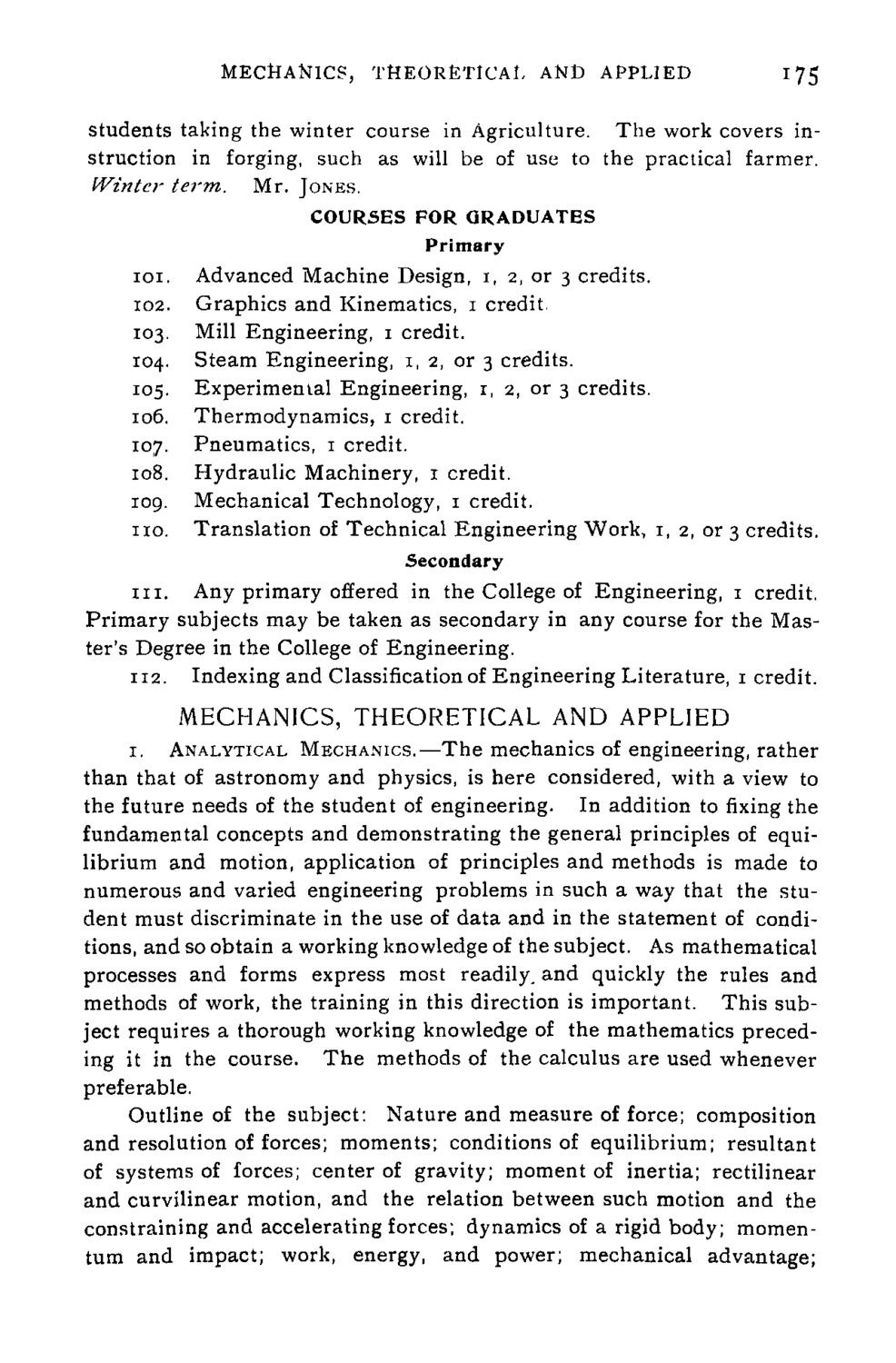| |
| |
Caption: Course Catalog - 1896-1897
This is a reduced-resolution page image for fast online browsing.

EXTRACTED TEXT FROM PAGE:
MECHANICS, THEORETICAL AND APPLIED 175 students taking the winter course in Agriculture. The work covers instruction in forging, such as will be of use to the practical farmer. Winter term. Mr. JONES. COURSES FOR GRADUATES Primary 101. Advanced Machine Design, 1, 2, or 3 credits. 102. Graphics and Kinematics, 1 credit 103. Mill Engineering, 1 credit. 104. Steam Engineering, 1, 2, or 3 credits. 105. Experimental Engineering, 1, 2, or 3 credits. 106. Thermodynamics, 1 credit. 107. Pneumatics, 1 credit. 108. Hydraulic Machinery, 1 credit. 109. Mechanical Technology, 1 credit. n o . Translation of Technical Engineering Work, 1, 2, or 3 credits. Secondary i n . Any primary offered in the College of Engineering, 1 credit. Primary subjects may be taken as secondary in any course for the Master's Degree in the College of Engineering. 112. Indexing and Classification of Engineering Literature, 1 credit. MECHANICS, THEORETICAL AND APPLIED 1. ANALYTICAL MECHANICS.—The mechanics of engineering, rather than that of astronomy and physics, is here considered, with a view to the future needs of the student of engineering. In addition to fixing the fundamental concepts and demonstrating the general principles of equilibrium and motion, application of principles and methods is made to numerous and varied engineering problems in such a way that the student must discriminate in the use of data and in the statement of conditions, and so obtain a working knowledge of the subject. As mathematical processes and forms express most readily, and quickly the rules and methods of work, the training in this direction is important. This subject requires a thorough working knowledge of the mathematics preceding it in the course. The methods of the calculus are used whenever preferable. Outline of the subject: Nature and measure of force; composition and resolution of forces; moments; conditions of equilibrium; resultant of systems of forces; center of gravity; moment of inertia; rectilinear and curvilinear motion, and the relation between such motion and the constraining and accelerating forces; dynamics of a rigid body; momentum and impact; work, energy, and power; mechanical advantage;
| |